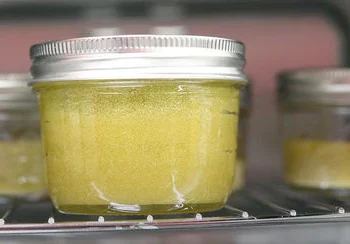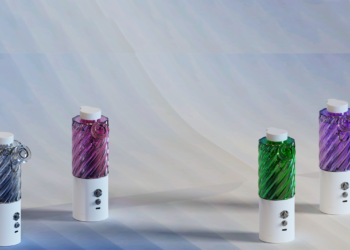The psychoactive properties of magic mushrooms have been utilized for centuries, and they remain popular today for recreational and medicinal purposes. Although there are numerous varieties of magic mushrooms, some are unquestionably more potent than others.
If you are searching for the most potent magic mushroom in the world, you have arrived at the correct location. This article will examine the most potent strains of magic mushrooms and the factors contributing to their potency.
The Ten Most Potent Magic Mushrooms
Contents
The following are the most potent magic mushrooms:
1. Pseudomonas Subaeruginosa (P. Subs)
Psilocybe subaeruginosa is a type of magic mushroom native to Australia. They are known to be very potent, with up to 1.93 percent psilocybin and 0.17 percent psilocin, and grow on various types of hardwood.
Psilocybe subaeruginosa has a caramel-coloured cap that fades to yellow as its hygrophanous cap dries out, often with remnants of the partial veil on the cap’s margin when younger. They have a fibrous white stem that varies in length and thickness, a spore print that is purple-black, and all parts of the mushroom bruise blue.
P. subaeruginosa is frequently found among Eucalypt debris, on forest edges, and paths through bushland or parks. P. subaeruginosa vary in size, shape, and cap colour and should not be confused with Galerina or Cortinarius. Galerina contains amatoxins, the same lethal compound found in Amanita phalloides, also known as the “Death Cap.”
2. Psilocybe Azurescens (Flying Saucers)
Psilocybe azurescens (Flying Saucer mushrooms) is related to Psilocybe subaeruginosa, which contains up to 1.78 percent psilocybin, 0.38 percent psilocin, and 0.4 percent baeocystin (Stamets & Gartz, 1995).
The species is restricted to North America’s Pacific Northwest Oceanic Climate. Furthermore, it is typically found in coastal grasslands and deciduous woodlands from British Columbia to Oregon. This species has been discovered in Europe as well.
3. Panaeolus Cyanescens (Blue Meanies)
Psilocybe azurescens (Flying Saucer mushrooms) is related to Psilocybe subaeruginosa, which contains up to 1.78 percent psilocybin, 0.38 percent psilocin, and 0.4 percent baeocystin (Stamets & Gartz, 1995).
The species is restricted to North America’s Pacific Northwest Oceanic Climate. Furthermore, it is typically found in coastal grasslands and deciduous woodlands from British Columbia to Oregon. This species has been discovered in Europe as well.
“Flying saucers,” like P. subaeruginosa, has a caramel-coloured cap that fades to yellow as the hygrophanous cap dries out. They have a fibrous white stem that varies in length and thickness, a spore print that is purple-black, and all parts of the mushroom bruise blue. They should not be confused with Galerina or Cortinarius. Galerina contains amatoxins, the same deadly compound found in Amanita phalloides, also known as the “Death Cap.”
4. Psilocybe Serbica
Horak discovered the European species Psilocybe serbica in 1969. It has said to have 1.34 percent psilocybin, 0.11 percent psilocin, and 0.02 percent baeocystin (Gartz and Muller, 1989; Gartz, 1994).
P. serbica is found in the Czech Republic and central Europe, formerly known as Bohemia, hence the synonym Psilocybe bohemica. The species is mainly found growing in groups. Usually found on well-decomposed deciduous and coniferous wood, twigs, compost, and plant humus. When dry, the cap is buff-brown to dingy orangish-brown and pale reddish-brown, smooth, hygrophanous, non-viscid, and lacks a separable gelatinous pellicle. When injured, the stem turns whitish to cream-coloured and bruises blue.
5. Psilocybe Semilanceata (Liberty Caps)
Horak discovered the European species Psilocybe serbica in 1969. It has said to have 1.34 percent psilocybin, 0.11 percent psilocin, and 0.02 percent baeocystin (Gartz and Muller, 1989; Gartz, 1994).
P. serbica is found in the Czech Republic and central Europe, formerly known as Bohemia, hence the synonym Psilocybe bohemica. The species is mainly found growing in groups. Usually found on well-decomposed deciduous and coniferous wood, twigs, compost, and plant humus. When dry, the cap is buff-brown to dingy orangish-brown and pale reddish-brown, smooth, hygrophanous, non-viscid, and lacks a separable gelatinous pellicle. When injured, the stem turns whitish to cream-coloured and bruises blue.
6. Psilocybe Baeocystis (Bottle Caps)
Psilocybe baeocystis, also known as “Bottle caps,” “knobby tops,” “Bluebells,” and “Olive caps.” This species is found throughout the Pacific Northwest. It grows solitary or in groups and minor to large numbers on ground bark, wood chips, peat moss, decaying conifer mulch, lawns, pastures, and rarely in coniferous forests.
It is said to have 0.85 percent psilocybin, 0.59 percent psilocin, and 0.10 percent baeocystin (Repke et al., 1977; Beug & Bigwood, 1982).
Its colour ranges from dark olive brown to buff brown, with hints of steel blue; it has a hygrophanous cap with a gelatinous separable pellicle, and as it dries, it tends toward copper brown in the center.
P. baeocystis is frequently found growing under rhododendrons and rose bushes in mulched garden beds and among other Psilocybe species such as Psilocybe stuntzii and Psilocybe cyanescens.
7. Psilocybe Cyanescens (Wavy Caps)
Psilocybe cyanescens “Wavy Cap mushrooms,” despite it being a close relative of Psilocybe subaeruginosa and Psilocybe azurescens, clocks in at 0.85 percent psilocybin and 0.36 percent psilocin (Stijve & Kuyper, 1985; Repke et al., 1977).
These most potent magic mushroom are widespread in parts of the United States, the United Kingdom, and Europe. Their range is expanding as a result of the use of mulch to suppress weed growth. They are a wood-loving species that will thrive in wood mulch. They are also known to bear a large number of fruits. According to urban legend, a patch of 100,000 mushrooms was discovered in the United Kingdom.
8.Psilocybe Samuiensis
Psilocybe samuiensis is known from Thailand’s Ranong Province. Furthermore, it is found on the tiny tropical island of Koh Samui and at Angkor Wat in Cambodia, but it is also known to occur in northern Australia. The concentrations of psilocybin and psilocin in the fruit bodies
ranged from 0.023-0.90% (dry weight) and 0.05-0.81%, respectively. Baeocystin was also found at concentrations ranging from 0.01 to 0.05%. (Gartz, Allen, and Merlin, 1994).
P. Samuiensis grows in sand and clay soil mixtures. During the tropical and subtropical wet seasons, it grows scattered to gregariously among wet grassy areas.
9. Psilocybe Tampanensis
This is the species from which most magical truffles are derived. Truffles are simply the underground portion of mushrooms but are the same organism. These are rare in the wild, and the sclerotia (truffle’s actual name) grows as a form of protection during wildfires or other traumatic events. The dried mushroom contains up to 1% psilocin and 0.68% psilocybin, while the sclerotia contain up to 0.68% psilocybin.
10. Psilocybe Cubensis (Iconic Magic Mushroom)
When cultivated, this species is known to produce much higher levels of tryptamine alkaloids (see below).
P. cubensis is one of the most commonly sourced “magic mushroom” species because it is the easiest to cultivate due to its ease of growth. Spore prints, spore syringes, and grow kits are all related products.
Cubensis has been the subject of extensive research, and many different subspecies have been bred. It is regarded as a versatile species. Psilocybe cubensis is found in tropical and subtropical climates all over the world.
Conclusion
Finally, the most potent psychedelic mushroom is Psilocybe Subaeruginosa. Various cultures have used the mushroom in religious ceremonies and rituals throughout history. Psilocybe Subaeruginosa is well-known for its powerful psychoactive properties, which can result in an intense spiritual experience.










